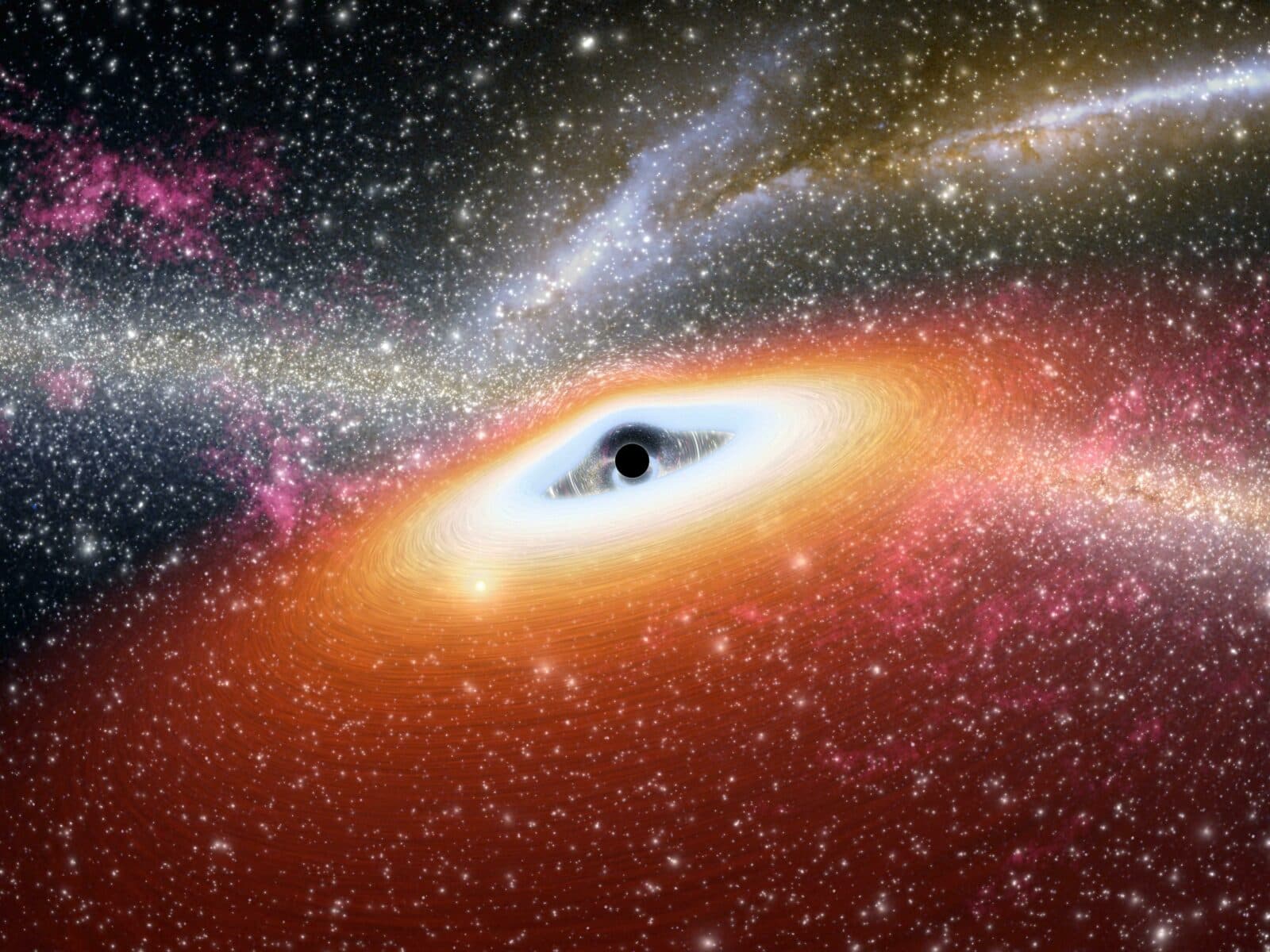Spotlight Live: Falling Into a Black Hole
by Bruce Lieberman
What happens when you encounter the mysterious remnant of a dead star whose gravity is so strong that not even light can escape?

The Author
The Researchers
NOTE: Thanks to everyone who joined our discussion. AN INDEX OF QUESTIONS are listed below with time stamps for hearing the answers.
WHAT HAPPENS WHEN YOU FALL INTO A BLACK HOLE, the mysterious remnant of a dead star whose gravity is so strong that not even light can escape? According to Einstein's general theory of relativity, the fall would be uneventful, until at some point the force of gravity would rip you apart. But a new theory suggests a different fate — and if correct, could challenge our understanding of gravity and how the universe works.
On Sept. 25, four theoretical physicists — Raphael Bousso (U.C. Berkeley), Juan Maldacena (Institute for Advanced Study), Joseph Polchinski (U.C. Santa Barbara) and Leonard Susskind (Stanford University) — answered your questions about the latest theories about what happens when matter falls into a black hole and how these ideas are prompting researchers to reconsider our understanding of gravity.
About the Participants
- RAPHAEL BOUSSO – Professor of Physics at the University of California, Berkeley, Dr. Bousso is recognized for discovering the general relation between the curved geometry of space-time and its information content, known as the "covariant entropy bound." This allowed for a precise and general formulation of the holographic principle, which is believed to underlie the unification of quantum theory and Einstein's theory of gravity. Dr. Bousso is also one of the discoverers of the landscape of string theory, which explains the small but non-vanishing value of the cosmological constant (or "dark energy"). His work has led to a novel view of cosmology, the multiverse of string theory.
- JUAN MALDACENA – Professor of Theoretical Physics at the Institute for Advanced Study in Princeton, New Jersey. Dr. Maldacena’s work focuses on quantum gravity, string theory, and quantum field theory. He has proposed a relationship between quantum gravity and quantum field theories that elucidates various aspects of both theories. He is studying this relationship further in order to understand the deep connection between black holes and quantum field theories, and he is also exploring the connection between string theory and cosmology.
- JOSEPH POLCHINSKI – A Professor of Physics at U.C. Santa Barbara and a permanent member of the Kavli Institute for Theoretical Physics (KITP) at UCSB. Dr. Polchinski's contributions to theoretical physics include his discovery of D-branes, extended structures that appear to be central to the mathematics and physics of string theory. He is also the author of a widely used two-volume text on string theory.
- LEONARD SUSSKIND – Felix Bloch Professor of Theoretical Physics at Stanford University, Director of the Stanford Institute for Theoretical Physics, and member of the Kavli Institute for Particle Astrophysics and Cosmology at Stanford. Dr. Susskind is regarded as one of the fathers of string theory, which attempts to describe the physics of the universe under a single mathematical framework. His current research interests include particle physics, quantum field theory, quantum gravity, black holes, string theory, and cosmology. Dr. Susskind has won both the Boris Pregel Award from the New York Academy of Sciences and the J.J. Sakurai Prize in Theoretical Particle Physics from the American Physical Society. He is also the author of popular science books on physics – among them "The Black Hole War: My Battle with Stephen Hawking to Make the World Safe for Quantum Mechanics," published in 2008.
- BRUCE LIEBERMAN – Freelance science writer and moderator. Bruce has more than 20 years of experience in the news business. He worked as a reporter at daily newspapers for many years before becoming an independent writer and editor in 2010. For The Kavli Foundation, he has interviewed researchers about numerous topics in astronomy & astrophysics, neuroscience and nanotechnology. He has also written for Scientific American, Smithsonian Air & Space and Sky & Telescope magazines, and other media outlets about a variety of science topics.
Your Questions
- What is the latest thinking about what happens when we fall in a black hole? (4:25)
- Why do physicists wonder if things that fall into a black hole disappear forever, or if information about them somehow survives? (6:55)
- Where does each of you stand on the firewall paradox? (13:45)
- Why does the choice among possible fates of things falling into a black hole cause so many problems? (19:50)
- How does this black hole debate relate to the larger understanding of the universe? (21:25)
- Do firewalls around black holes really exist, and if not, are there other options? (25:10)
- What is another way of understanding this paradox? (26:40)
- How could the idea of wormholes help support our classical view of gravity when it comes to black holes? (29:55)
- What are the opposing thoughts regarding the idea that wormholes exist in nature? (33:20)
- How does this relate to gravity and a unified theory? (37:25)
- How does the firewall preserve information? (40:30)
- If we are inside a black hole, what would we see looking out? (42:00)
- Would the biggest black holes, such as those at the center of galaxies, have firewalls? (43:10)
- What is next for this research? (49:30)